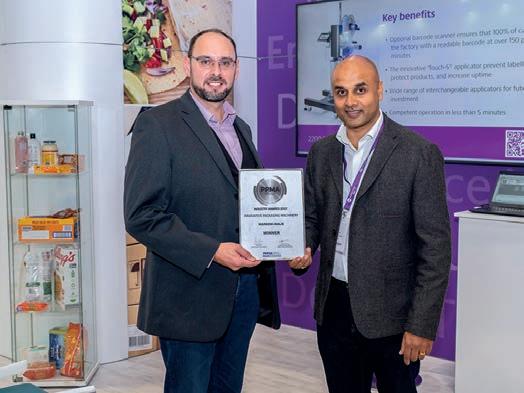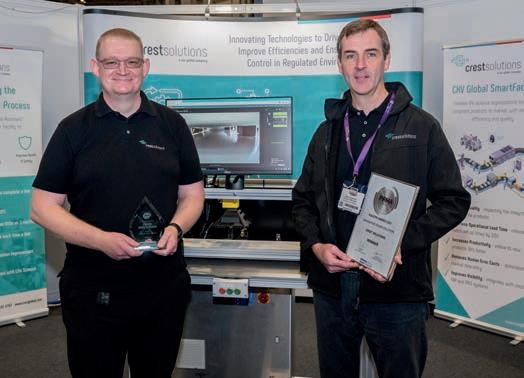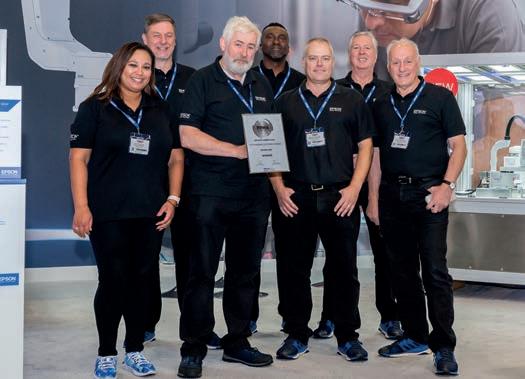
6 minute read
REGULATIONS
Initial inspections are vitally important
Paul Laidler Darren Hugheston-Roberts
Advertisement
BUSINESS DIRECTOR FOR MACHINERY SAFTEY AT TÜV SÜD PRODUCT SERVICE HEAD OF MACHINERY SAFETY
When installing and then using Ex-rated machinery, end users must ensure a competent person carries out an intrusive inspection to verify conformity and compliance with ATEX Directives…
In the European Union there are two ATEX Directives – one for the manufacturer and one for the user of the equipment. The ATEX 114 ‘equipment’ Directive 2014/34/EU focuses on the responsibilities of manufacturers of Ex-rated machinery and other equipment. In the UK, it is implemented by The Equipment and Protective Systems Intended for Use in Potentially Explosive Atmospheres Regulations 2016, which is law.
The legislation’s function is to ensure that the design and manufacture of equipment intended for explosive atmospheres conforms with the Essential Health and Safety Requirements, so that these are met before anything is placed on the market. This is typically achieved by third-party testing and certification by an Approved or Notified Body. However, after machinery has been installed, how can you verify that conformity and also compliance have been achieved?
To ensure the installation quality and integrity of Ex-rated equipment post installation, an intrusive inspection by a competent person should be carried out. This process is described within the requirements of EN60079-17 as an ‘Initial Detailed Inspection’. If carried out correctly, such an inspection will ensure that the equipment, including its internal and external components, are fit for purpose and installed correctly.
Manufacturers spend thousands of pounds designing and testing equipment intended for explosive areas, and typically the end-user will pay a premium for these products. So, if your installer compromises the manufacturer’s design, this invalidates the equipment and creates a potentially dangerous installation. As an example, they might discard cable gland internals and
decide that the simplest way to hang an Ex-rated light fitting is to drill through the casing to mount it, or they might drill and tap the lid of an Ex-rated enclosure to fit an identification label.
Also, and assuming the issue is identified, there will be a significant financial cost to re-establish compliance. This is so often the case when an end-user takes delivery of, for example, a packaged skid assembly which has been manufactured off-site at a supplier’s premises. In such circumstances, Ex-related issues are only found during the completions, inspections and commissioning process. The consequence will be delays to commissioning and potentially start-up, alongside unplanned additional financial costs.
Installer competency is often a key issue, as it is common for suppliers and installers to hire workers for ad-hoc projects. While keeping a core team of technicians as full-time employees is not always financially viable, this does make the assurance of installer competency a difficult area to manage.
However, the problem can be more systemic, and looking at the bigger picture, the questions might be – did
the supplier fully understand what they were asked to build and to what standard? Were the specifications and design documents supplied by the end-user or designer adequate? Did they cover the required legislative areas correctly and suitably? Were the appropriate standards referenced?
At this point in a project, disputes and frustrations are common, which can lead to further delays and cost – all of which can be avoided.
Employing competent, impartial and independent Ex inspectors to inspect installations and carry out detailed inspections prior to initial use, or in the case of the suppliers, prior to shipping, is a key element to detecting and rectifying problems early. Engaging a competent inspector to monitor the build, offer advice and potentially mentor as the installation progresses is an area that is often overlooked. However, by doing so, there is significant potential to minimise or eliminate the need for rework after inspection.
Another area that is commonly discounted is the use of an independent and impartial specialist to review the technical documentation and project deliverables with respect to the installation of Ex-electrical and non-electrical equipment. Design reviews, alongside build monitoring and inspection during the whole lifecycle of the project, will ensure both compliance and quality are achieved first time and on time.
It is clear that ensuring that the supplier or installer knows exactly what they are tasked with delivering is key to ensuring the safe and successful delivery of new Ex-rated installations. Specifying the scope and required level of competency is therefore vital, alongside the involvement of competent people in the design, procurement and installation in order to help to mitigate any Ex-compliance issues.
Using a competent inspector to inspect ATEX installations prior to use can eliminate rework afterwards
i For more information contact W www.tuv-sud.co.uk TÜV SÜD Product Service is the PPMA’s technical and legislative partner
Celebrating outstanding sector achievements
This year’s PPMA Group Industry Awards were presented on the second night of the PPMA Total Show during the ever-popular exhibitor party. The independent judging panel felt there were many outstanding entries in this year’s awards – and you can read about them here…
On the Wednesday evening of the PPMA Total Show, all of the winners celebrated their success during the exhibitor party that included a live Britpop band

Innovative Robotics Solution
Winner: Pace Mechanical Handling for its six-axis robot solution
This unique robotics solution combines two six-axis robots which work in tandem, to feed, pack and hot air-seal animal feed pellets into plastics bags before leading on to a robotic palletiser. It was felt to be a great example of taking an unorthodox process to replace a time-consuming process for operators which had also caused a lot of downtime.

Innovative Packaging Machinery
Winner: Markem-Imaje for its ‘e-Touch’ labelling system
The e-Touch-S has been built with artificial intelligence to ensure that labels are applied to an exacting standard on every pack, at the highest production speeds, and in the safest manner possible – delivering cost savings, productivity, safety, innovation and efficiency. Markem- Imaje impressed because they tick all the boxes for manufacturers today – cost savings, productivity, safety, innovation and efficiency, said the judges.

Innovative Vision Solution
Winner: Crest Solutions for its CXV Global SmartFactory LineClearance Assistant
This vision-based solution digitalises the manual line clearance process. Customer ROI calculations showed that with a 20% deployment across its packaging lines, the LCA could achieve a 69% reduction in visual inspection time. Judges were impressed with the quite remarkable cost saving potential that the company had achieved with this innovative vision-based solution.

Outstanding Customer Service
Winner: Epson (UK) for its ‘Robot Academy’ customer service tool
Epson’s Robot Academy enables its customers to become specialists themselves in Epson Robot technology. Delivered in small groups, the sessions teach clients theoretical and practical knowledge involving ‘real’ robots. Practice sessions reinforce what was learnt while trainers are on hand to respond quickly to any questions attendees may have.

Innovative Processing System
Winner: Fortress Technology for its ‘Fortress Halo’ processing system
The Fortress Halo solved a problem applicable to all food manufacturers for processing metal detection. Fortress developed a simple system, which is easy for staff to use and causes no production disruption in operation. The Halo system was praised by the judges for offering a quick return on investment and also helping to reduce staffing levels.





